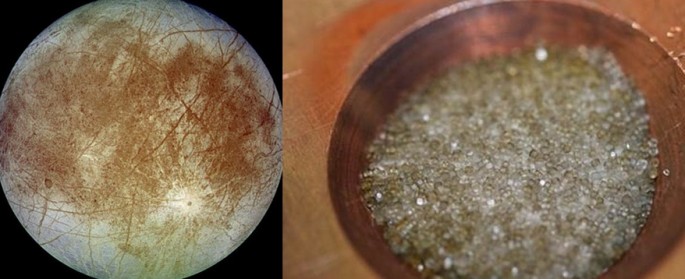A novel experiment by NASA scientists has confirmed the many dark lines scarring Jupiter's moon Europa are most likely sea salt, suggesting conditions that favor microbial life exists under its icy crust.
The smoothness of Europa's surface has led to the theory a water ocean exists beneath its icy crust, which could conceivably harbor extraterrestrial life. Europa is primarily made of silicate rock and has a water-ice crust. It has the smoothest surface of any known solid object in the Solar System.
Kevin Hand and Robert Carlson of NASA's Jet Propulsion Laboratory in Pasadena, California, used what they call a "Europa in a can" experiment to arrive at their conclusion the dark streaks or "lineae" crisscrossing the entire moon are sea salt.
Scientists currently believe the lineae could have been produced by a series of eruptions of warm ice as the crust spread open to expose warmer layers beneath it.
The NASA team simulated a portion of Europa's surface in a laboratory. They duplicated its sub-zero temperature, pressure and radiation exposure conditions.
They then bombarded salt samples with radiation. The salt samples, which were colored white like table salt, turned a yellowish-brown, similar to the dark color within the fractures on Europa, the team said.
The presence of sea salt on Europa's surface suggests the moon's icy ocean is interacting with its rocky seafloor. Scientists said this hypothesis could reinforce the belief Europa has the necessary ingredients to support life.
"We have many questions about Europa, the most important and most difficult to answer being is there life? Research like this is important because it focuses on questions we can definitively answer, like whether or not Europa is inhabitable," said Curt Niebur, Outer Planets Program scientist at NASA headquarters in Washington, as quoted by NBC News.
"Once we have those answers, we can tackle the bigger question about life in the ocean beneath Europa's ice shell."
NASA is planning a flyby mission of Europa in the 2020s.



























